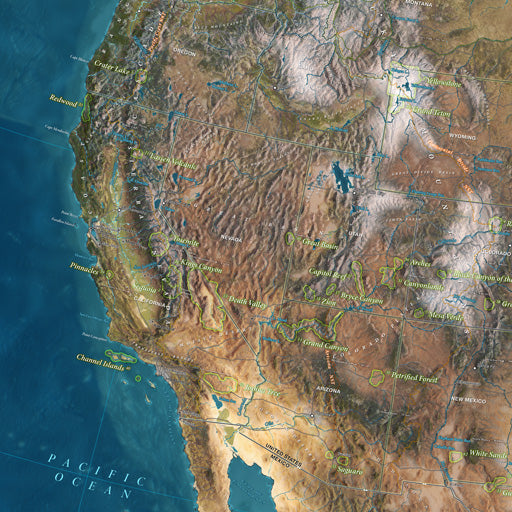The 1850s: A Decade of Transformation in a Changing World
The 1850s were a time of profound change and tumultuous events that shaped the course of world history. This decade was marked by significant developments in politics, technology, culture, and social movements. From the expansion of empires to the rise of revolutionary movements and the beginnings of the Industrial Revolution, the 1850s left an indelible mark on the world. In this exploration of the history of the world in the 1850s, we delve into the key events and trends that defined this transformative period.
Global Expansion and Imperialism:
The 1850s witnessed the zenith of European imperialism and the expansion of colonial empires. European powers, particularly Britain and France, continued to carve out vast colonial territories in Asia, Africa, and the Pacific. The British Empire, in particular, was at its height, with Queen Victoria reigning over an empire on which "the sun never set."
The Crimean War (1853-1856) was one of the significant conflicts of the decade. It pitted an alliance of France, Britain, the Ottoman Empire, and Sardinia against Russia. The war had complex origins, but a central issue was the control of religious sites in the Holy Land. The war ended with the Treaty of Paris, which reshaped the map of Eastern Europe and the Black Sea region.
Revolutionary Movements:
The 1850s were marked by revolutionary fervor and uprisings in various parts of the world. In Europe, the spirit of revolution that had swept across the continent in the 1840s continued to simmer. In 1851, Louis Napoleon Bonaparte staged a coup d'état in France, establishing himself as Emperor Napoleon III. Meanwhile, revolutionary movements and protests erupted in the German states, Italy, and Hungary, challenging the conservative order.
In Asia, the Indian Rebellion of 1857 (also known as the Sepoy Mutiny) was a significant anti-colonial uprising against British rule. It began as a mutiny among Indian soldiers (sepoys) in the British East India Company's army and quickly escalated into a widespread revolt against British colonial authority. Although the rebellion was eventually quelled, it had a lasting impact on the struggle for Indian independence.
The Industrial Revolution:
The 1850s were a pivotal period in the ongoing Industrial Revolution. Technological innovations, such as the development of the telegraph and the expansion of railroads, transformed communication and transportation. The use of steam power in manufacturing and industry continued to accelerate, leading to the growth of factories and urbanization.
One of the most significant engineering achievements of the era was the completion of the Crystal Palace in London in 1851. This massive structure, designed by Joseph Paxton, was built to house the Great Exhibition, a showcase of the world's technological and industrial achievements. It symbolized the optimism and progress of the Industrial Revolution.
The California Gold Rush:
In the United States, the 1850s were marked by the California Gold Rush, a migration of an estimated 300,000 people to California in search of gold. The discovery of gold at Sutter's Mill in 1848 had set off a frenzy of prospecting and immigration to the region. By the early 1850s, California's population had swelled, leading to its admission as the 31st state in 1850.
The Gold Rush had a profound impact on California's economy and society, leading to the rapid development of cities like San Francisco and the expansion of infrastructure. It also played a role in the ongoing debate over the extension of slavery in the United States, as California's admission as a free state upset the balance of power between slave and free states.
Science and Exploration:
The 1850s were a time of great scientific discovery and exploration. Charles Darwin's "On the Origin of Species" was published in 1859, introducing the theory of evolution by natural selection, which revolutionized the field of biology.
In the realm of exploration, David Livingstone, a Scottish missionary and explorer, embarked on his famous journeys to Africa in the 1850s. He was instrumental in mapping large parts of the African continent and advocating for the abolition of the slave trade.
The Crimean War and Florence Nightingale:
The Crimean War had a profound impact on the field of medicine and nursing. Florence Nightingale, a British nurse, gained fame for her work in the military hospitals of the Crimea. She introduced modern nursing practices, emphasizing hygiene and sanitation, which significantly reduced the mortality rate among wounded soldiers. Nightingale's contributions to healthcare would have a lasting legacy.
Cultural and Literary Developments:
The 1850s were also a fertile period for literature and culture. In the United States, writers like Nathaniel Hawthorne, Herman Melville, and Walt Whitman were producing some of their most significant works. Melville's "Moby-Dick" and Hawthorne's "The Scarlet Letter" are enduring classics of American literature.
In England, Charles Dickens continued to publish his serialized novels, including "Bleak House" and "Hard Times." These works explored social and economic issues of the time and reflected the broader concerns of Victorian society.
The 1850s were a decade of immense change and transition on the global stage. Imperialism and colonial expansion reshaped the world map, while revolutionary movements challenged established powers. The Industrial Revolution continued to gather momentum, transforming economies and societies. Scientific breakthroughs and literary achievements left a lasting impact on culture and thought. As the world hurtled toward the challenges and conflicts of the 1860s, the legacy of the 1850s would continue to shape the course of history for years to come.
























